Rules Of Golf: Ball Resting Against A Rake
Found your ball resting against a rake (a movable obstruction)? We explain how to proceed correctly under the Rules...

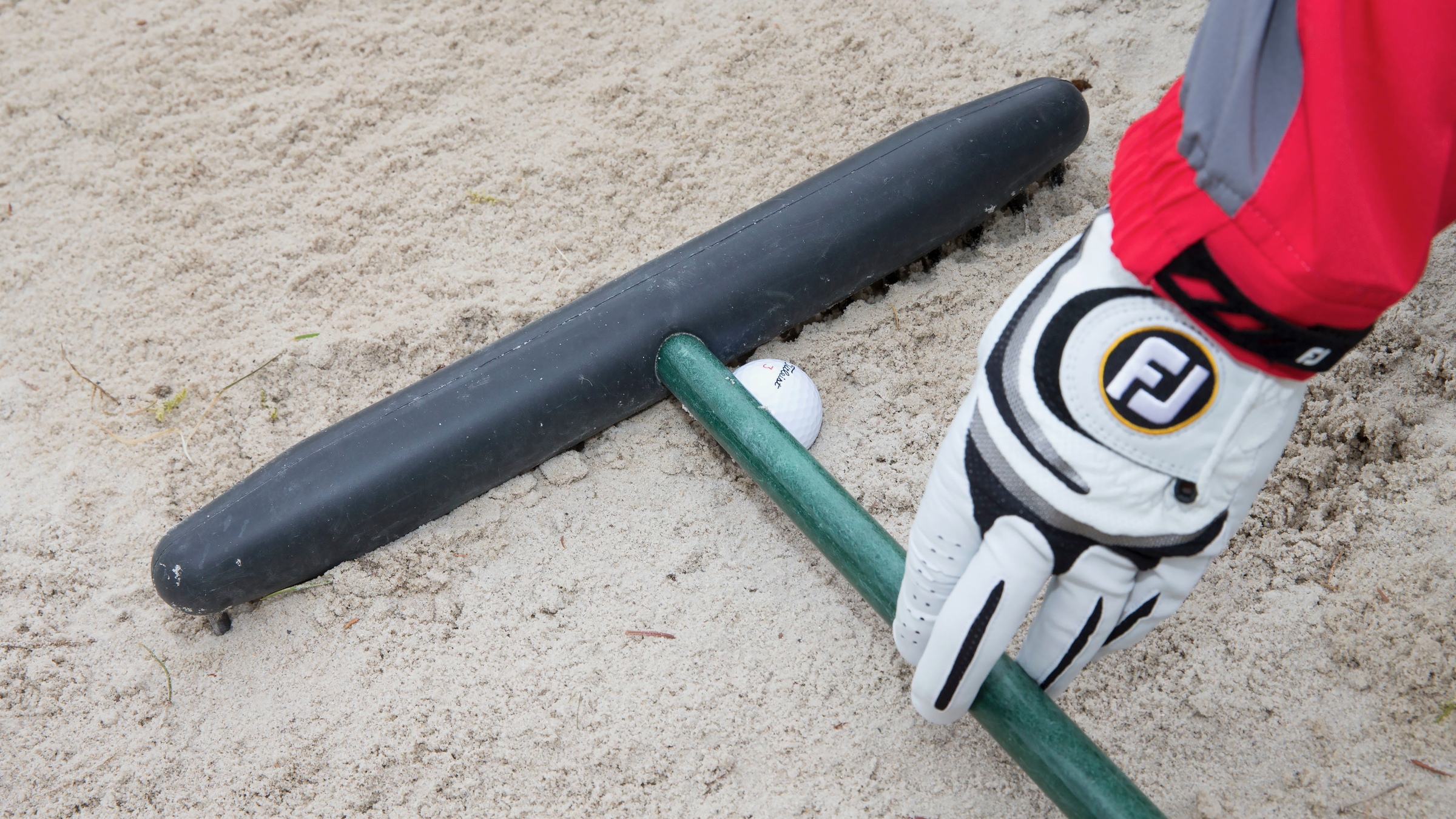
In this video and article we look at what you must do if you find your ball resting against a rake and it then rolls away when you remove the rake...
While certain movable obstructions (anything manmade or artificial that can be moved with reasonable effort) are relatively rarely encountered on the golf course, there is one - the rake - that is ever-present at any golf club with bunkers (so most courses then, although we do have a number of bunkerless courses in the UK).
Debate will continue to rage as to where best to leave the rake after you have used it, and although consensus is unlikely to ever be reached among golfers, suffice to say that leaving it in a position and at an angle where it is least likely to interfere with play is surely the wisest and fairest option.
Even so, wherever the rake is, it still has the potential to interfere with play, so occasionally you will need to know what to do when you find your ball resting against a rake, as is the case in the video here.
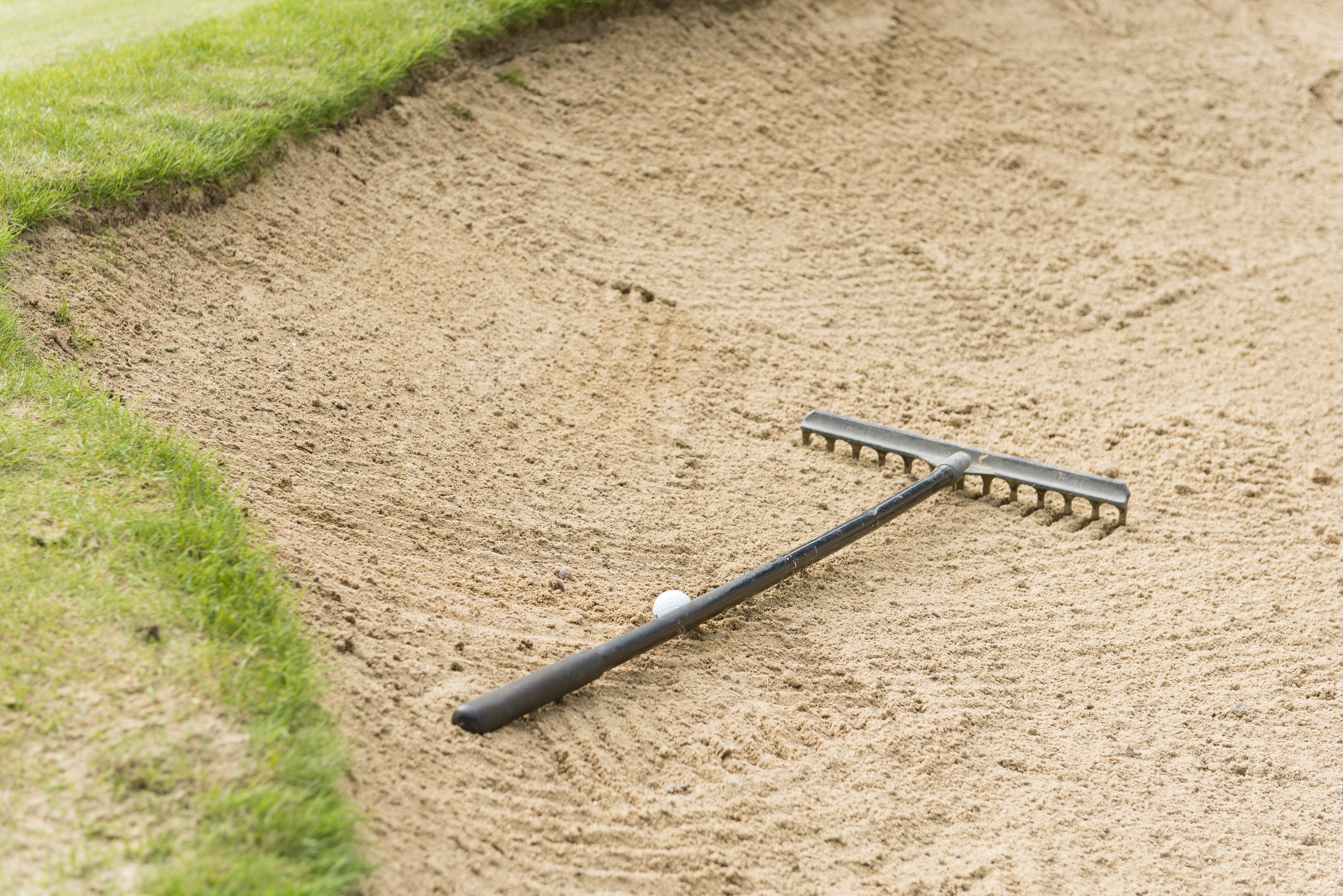
Do you know what to do if you find your ball resting against a rake anywhere on the course?
This video and article describe how you need to proceed if your ball is resting against a movable obstruction such as a rake and the ball then moves when the obstruction is removed. Rule 15.2a is where you'll find all the details for this scenario, and also for if your ball is actually lying in or on a movable obstruction such as a towel, when the relief process differs slightly.
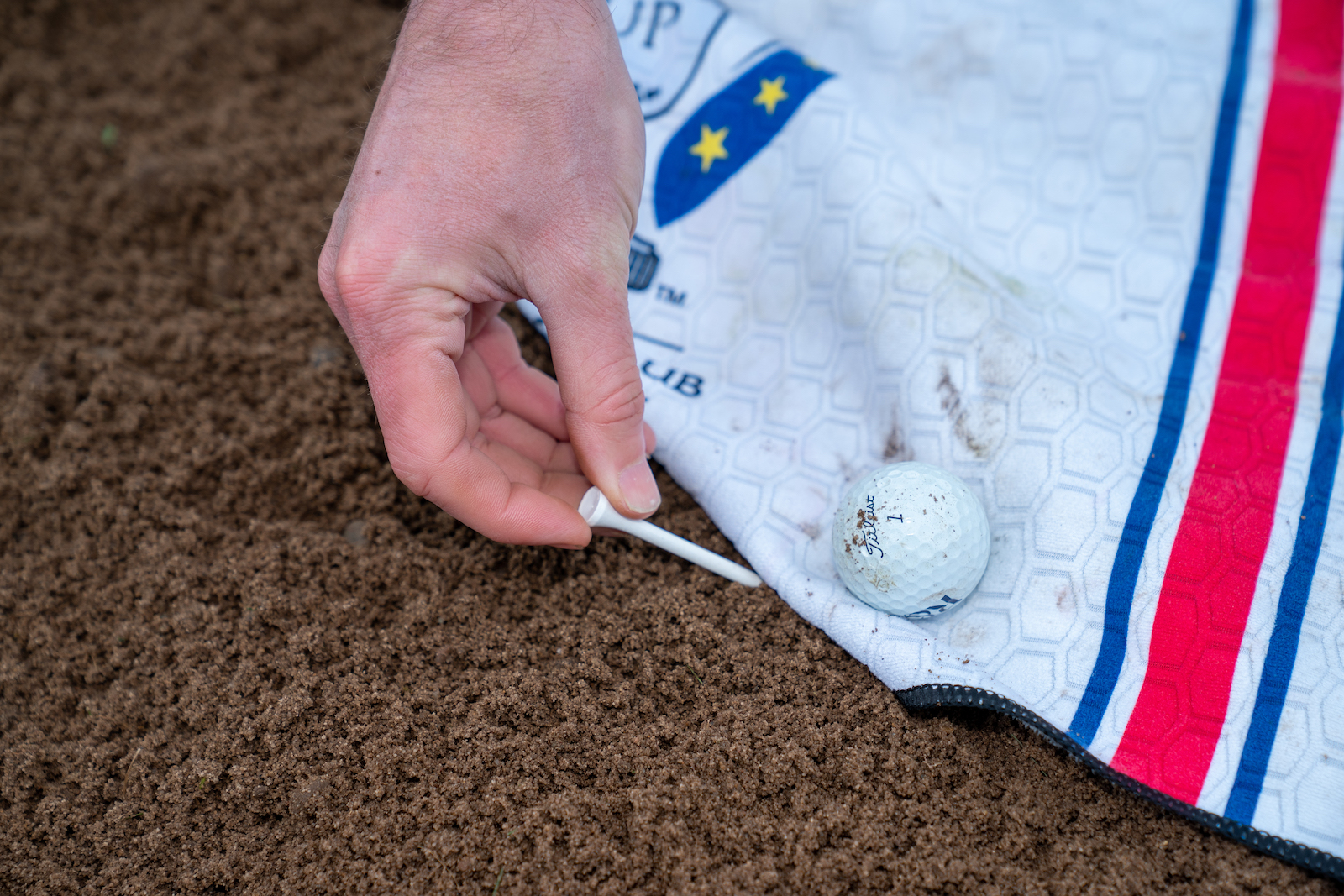
The relief process is slightly different if your ball is on a movable obstruction such as a towel, where you drop rather than place
Even if you don't know the precise Rule, you will probably assume (rightly!) that the Rules of Golf wouldn't expect you to play the ball as it lies or suffer a penalty drop in such a scenario. So, yes, you are entitled to remove the rake, but if the ball moves in the process, do you play it from...
1) The place that it rolls to when you remove the rake?
2) Where it was lying originally before the rake was removed?
3) Either of these two locations at your choosing?
Subscribe to the Golf Monthly newsletter to stay up to date with all the latest tour news, equipment news, reviews, head-to-heads and buyer’s guides from our team of experienced experts.
The answer is: 2) Where it was lying originally before the rake was removed.
If the ball moves when you remove the rake you must replace it on its original spot
Sometimes this is likely to be good news if the rake has prevented your ball rolling into the back edge of a bunker, and sometimes bad news if it leaves you perched awkwardly on a slope. But you don’t get a choice in the matter so need to remember that sometimes it will play out to your advantage, and sometimes not!
Before removing the rake, it’s wise to mark the position of the ball so you know where to replace it if it does move. You are not obliged to do this under the Rules, but it will usually make things simpler. You must then attempt to replace the ball on the spot where it was lying against the rake.
The obvious next question is what to do if you can’t get the ball to remain at rest in its original location – a fairly likely outcome if you're on a slope and the ball moved when you removed the rake.
You need to know that you are not allowed to press it into the ground - even gently - as that would be a breach of the Rules despite it perhaps seeming a simple way to get you on your way again quickly. Rather, you should make two attempts to place it on the spot where it was, and if it still rolls away, then place it at the closest spot possible – not nearer the hole - where it will remain at rest.
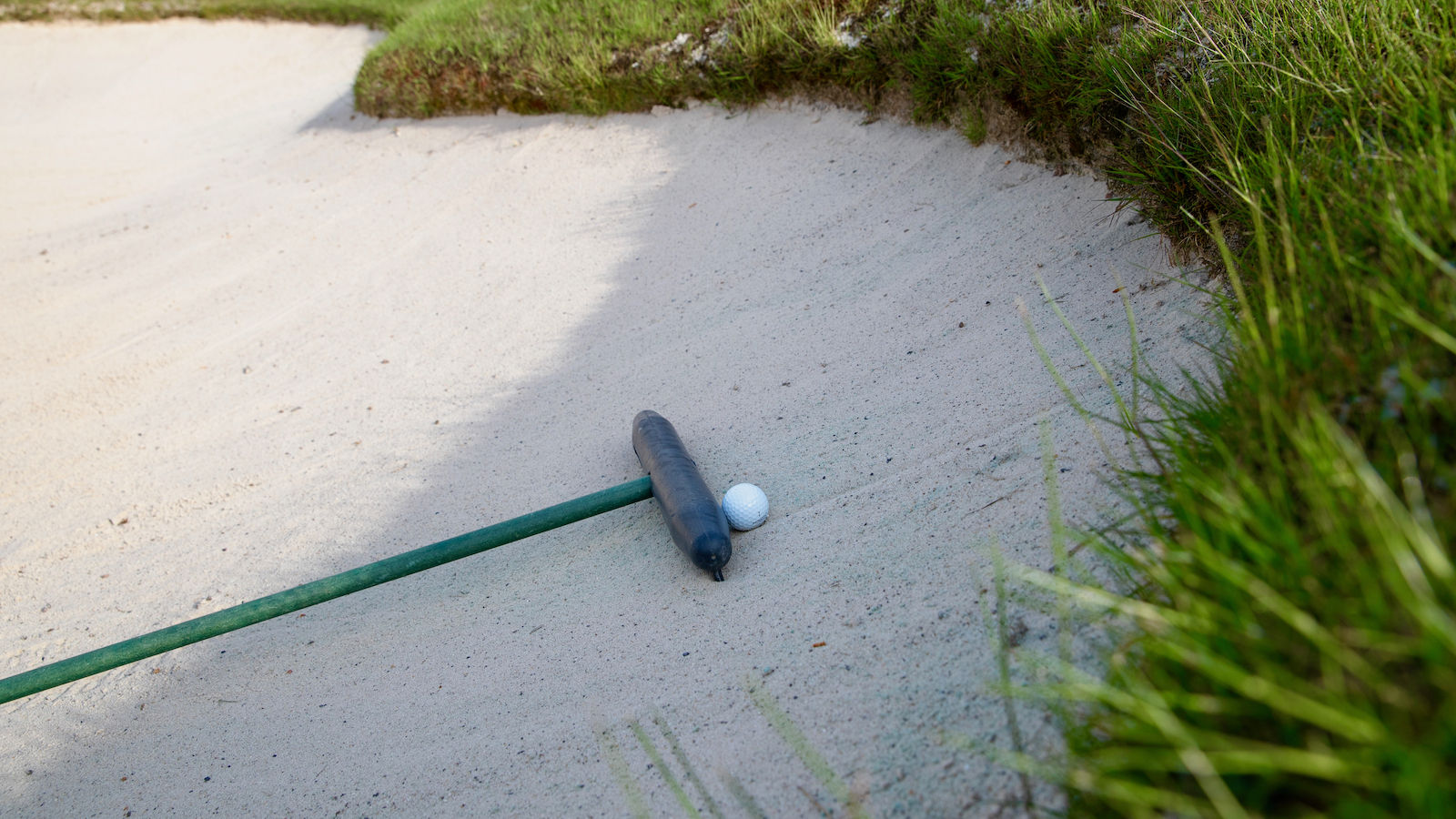
Here, if the ball won't stay at rest when replaced twice, you must place it at the nearest point not nearer the hole where it will in the same bunker
If the ball was originally in the general area of the course, this spot must also be in the general area. Similarly, if the original spot was in a bunker or penalty area, the nearest spot must also be in that same bunker or same penalty area respectively. The ball is then in play. Rule 14.2e is where you'll find all the details.
As we say, sometimes this will be a good result, sometimes less so, so it’s best simply to take the rough with the smooth and remember the lucky breaks as well as the bad ones!

Jeremy Ellwood has worked in the golf industry since 1993 and for Golf Monthly since 2002 when he started out as equipment editor. He is now a freelance journalist writing mainly for Golf Monthly. He is an expert on the Rules of Golf having qualified through an R&A course to become a golf referee. He is a senior panelist for Golf Monthly's Top 100 UK & Ireland Course Rankings and has played all of the Top 100 plus 91 of the Next 100, making him well-qualified when it comes to assessing and comparing our premier golf courses. He has now played 1,000 golf courses worldwide in 35 countries, from the humblest of nine-holers in the Scottish Highlands to the very grandest of international golf resorts. He reached the 1,000 mark on his 60th birthday in October 2023 on Vale do Lobo's Ocean course. Put him on a links course anywhere and he will be blissfully content.
Jezz can be contacted via Twitter - @JezzEllwoodGolf
Jeremy is currently playing...
Driver: Ping G425 LST 10.5˚ (draw setting), Mitsubishi Tensei AV Orange 55 S shaft
3 wood: Srixon ZX, EvenFlow Riptide 6.0 S 50g shaft
Hybrid: Ping G425 17˚, Mitsubishi Tensei CK Pro Orange 80 S shaft
Irons 3- to 8-iron: Ping i525, True Temper Dynamic Gold 105 R300 shafts
Irons 9-iron and PW: Honma TWorld TW747Vx, Nippon NS Pro regular shaft
Wedges: Ping Glide 4.0 50˚ and 54˚, 12˚ bounce, True Temper Dynamic Gold 105 R300 shafts
Putter: Kramski HPP 325
Ball: Any premium ball I can find in a charity shop or similar (or out on the course!)